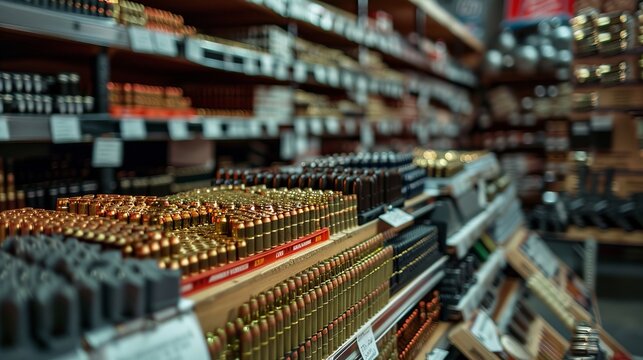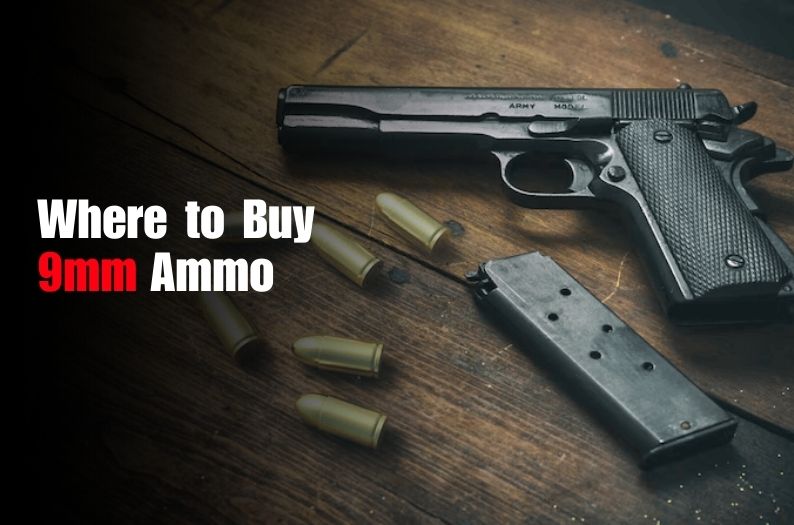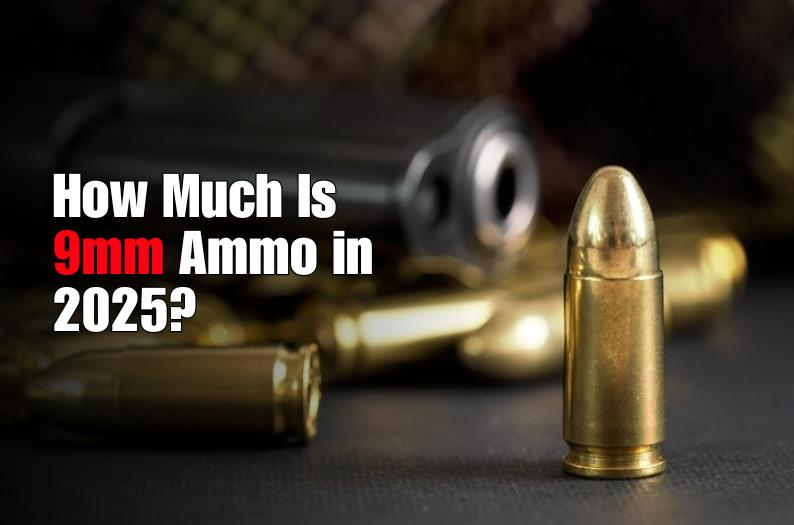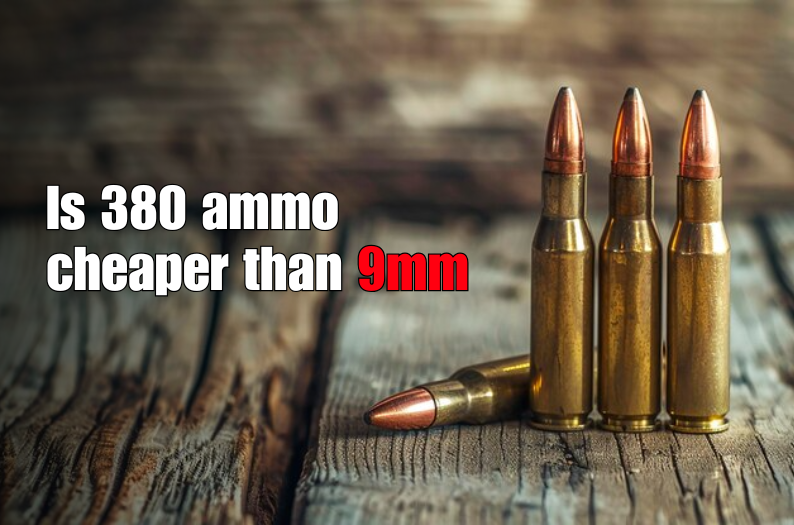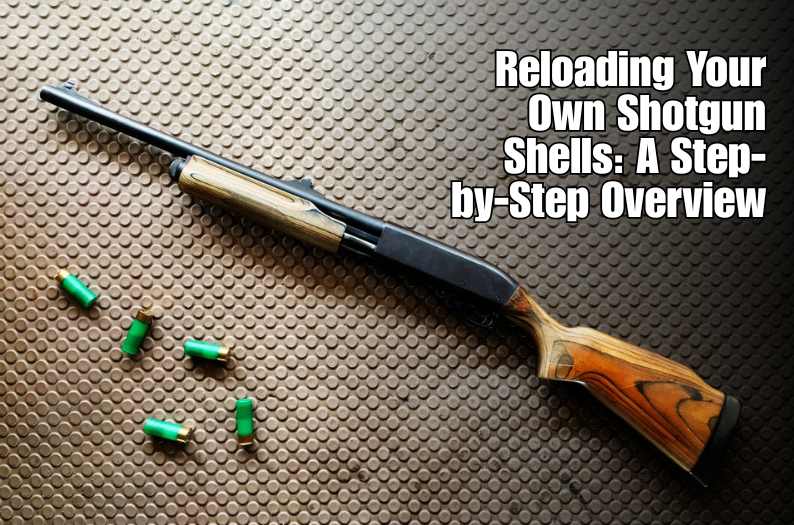Introduction to Gun Calibers
Gun calibers are one of the most critical aspects of firearms, determining the size of the bullet and, consequently, the performance, application, and effectiveness of the firearm. Calibers are expressed in either inches or millimeters, representing the internal diameter of the gun barrel or the diameter of the bullet that is fired from it. Understanding the various calibers available, their purposes, and appropriate use cases is essential for both firearm enthusiasts and professionals.
This guide will explore a wide range of calibers, discussing their meanings, history, and specific use cases. Whether for hunting, self-defense, sport shooting, or military applications, each caliber has unique characteristics that make it suitable for particular purposes.
1. What is a Gun Caliber?
A gun caliber is the measurement of the internal diameter of a firearm's barrel or the diameter of the bullets used in the firearm. Caliber can be expressed in either inches (imperial measurement) or millimeters (metric measurement). For example, a .22 caliber means the bullet has a diameter of 0.22 inches, while a 9mm caliber means the bullet's diameter is 9 millimeters.
a. Measurement Systems: Imperial vs. Metric
- Imperial System: Used mainly in the United States, calibers in this system are expressed in fractions or decimals of an inch (e.g., .45 ACP, .308 Winchester).
- Metric System: Common in Europe and other parts of the world, calibers are expressed in millimeters (e.g., 7.62mm, 5.56mm).
b. Caliber Notation
- Small-Bore: Calibers less than .30 inches (e.g., .22 LR, .223 Remington).
- Medium-Bore: Calibers between .30 and .39 inches (e.g., .308 Winchester, 7.62 NATO).
- Large-Bore: Calibers .40 inches or larger (e.g., .45 ACP, .50 BMG).
2. Understanding the Purpose of Different Calibers
Different calibers are designed with specific purposes in mind. From small-game hunting to long-range sniping, the caliber you choose directly impacts the effectiveness and safety of your shooting activity.
a. Small Calibers
- .22 Long Rifle (LR)
- Description: One of the most popular and widely used calibers, the .22 LR is a small, rimfire cartridge.
- Use Cases: Ideal for small-game hunting, target shooting, and training. It is favored by beginners due to its low recoil and affordable ammunition.
- Intent: The .22 LR is designed for minimal recoil, making it suitable for training new shooters and performing precision target shooting.
- .17 HMR (Hornady Magnum Rimfire)
- Description: A rimfire cartridge known for its high velocity and flat trajectory.
- Use Cases: Excellent for varmint hunting and small-game shooting at medium distances. It offers more stopping power than the .22 LR but with similar recoil.
- Intent: The .17 HMR is intended for shooters looking for a balance between speed and precision, making it effective for small, fast-moving targets.
b. Medium Calibers
- 9mm Luger
- Description: Also known as 9x19mm Parabellum, this caliber is the standard for many handguns worldwide.
- Use Cases: Commonly used in self-defense, law enforcement, and military applications. It offers a good balance between recoil, stopping power, and magazine capacity.
- Intent: The 9mm Luger is designed for reliable performance in both self-defense and duty use, with sufficient power to stop a threat without excessive recoil.
- .45 ACP (Automatic Colt Pistol)
- Description: A large-caliber round known for its stopping power and heavy bullet weight.
- Use Cases: Favored in self-defense and military use, especially in situations where stopping power is critical.
- Intent: The .45 ACP is intended for scenarios where a larger bullet is required to ensure maximum impact and stopping power, often at the cost of higher recoil.
- .223 Remington/5.56 NATO
- Description: While .223 Remington and 5.56 NATO are technically different, they are often considered interchangeable in modern sporting rifles.
- Use Cases: Common in both civilian and military use, particularly in AR-15 style rifles. It is ideal for varmint hunting, sport shooting, and personal defense.
- Intent: Designed for versatility, the .223 Remington/5.56 NATO balances power and control, making it suitable for various applications, including medium-range engagements.
c. Large Calibers
- .308 Winchester/7.62 NATO
- Description: A popular large-caliber round used in both hunting and military applications. The .308 Winchester and 7.62 NATO are nearly identical but have slight differences in pressure and case thickness.
- Use Cases: Used for hunting large game, long-range shooting, and military sniping. It offers excellent accuracy and stopping power at extended distances.
- Intent: The .308 Winchester is designed for power and accuracy over long distances, making it a top choice for precision shooters and hunters alike.
- .50 BMG (Browning Machine Gun)
- Description: A large-caliber round originally designed for military machine guns and now used in long-range sniper rifles.
- Use Cases: Employed in anti-materiel roles, long-range sniping, and by enthusiasts in extreme long-range shooting.
- Intent: The .50 BMG is designed to penetrate heavy armor and deliver devastating power at extreme ranges, making it suitable for specialized military operations.
3. Calibers in Handguns
Handgun calibers vary widely, and each has its pros and cons depending on the intended use. Below are some of the most common handgun calibers:
a. Popular Handgun Calibers
- .380 ACP
- Description: A small-caliber, low-recoil round often used in compact and subcompact handguns.
- Use Cases: Ideal for concealed carry and self-defense. Its low recoil makes it suitable for shooters who prefer smaller, easily controllable firearms.
- Intent: The .380 ACP is designed for easy handling and concealability, offering a compromise between size, power, and ease of use.
- .357 Magnum
- Description: A powerful revolver cartridge known for its high velocity and stopping power.
- Use Cases: Used for self-defense, hunting, and target shooting. It is particularly effective against larger threats and in situations where penetration is necessary.
- Intent: The .357 Magnum is designed for power and penetration, making it ideal for defensive situations and hunting small to medium game.
- .40 S&W (Smith & Wesson)
- Description: A caliber developed as a compromise between the 9mm and .45 ACP, offering a balance of power, recoil, and magazine capacity.
- Use Cases: Commonly used in law enforcement and self-defense. It provides more stopping power than a 9mm but with manageable recoil.
- Intent: The .40 S&W is designed to offer enhanced stopping power while maintaining control, making it suitable for duty and personal protection.
- 10mm Auto
- Description: A powerful, high-velocity round initially developed for the FBI but later favored by hunters and enthusiasts for its power.
- Use Cases: Effective for self-defense, hunting, and sport shooting. It is particularly popular for hunting medium-sized game due to its power and penetration.
- Intent: The 10mm Auto is designed for maximum power and velocity, making it suitable for challenging environments where stopping power is critical.
4. Calibers in Rifles
Rifle calibers are designed for various purposes, ranging from small-game hunting to long-range precision shooting. Below are some of the most common rifle calibers:
a. Popular Rifle Calibers
- .22 LR (Long Rifle)
- Description: The most popular rimfire cartridge, known for its low cost and low recoil.
- Use Cases: Used for small-game hunting, target shooting, and training. It is the go-to caliber for beginner shooters and those looking for affordable practice.
- Intent: The .22 LR is designed for versatility and accessibility, making it suitable for a wide range of shooting activities, particularly where minimal recoil is desired.
- .223 Remington/5.56 NATO
- Description: A small-caliber, high-velocity round commonly used in AR-15 style rifles.
- Use Cases: Popular in sport shooting, varmint hunting, and personal defense. It is favored for its versatility and effectiveness at medium ranges.
- Intent: The .223 Remington/5.56 NATO is designed to offer a balance of power and control, making it suitable for a wide range of applications from target shooting to defensive use.
- .308 Winchester/7.62 NATO
- Description: A larger, more powerful caliber known for its accuracy and long-range performance.
- Use Cases: Used in hunting, military sniping, and sport shooting. It is particularly effective for taking down large game and long-range engagements.
- Intent: The .308 Winchester/7.62 NATO is designed for precision and stopping power at extended distances, making it ideal for hunting large game and military applications where accuracy and range are crucial.
- .300 Winchester Magnum
- Description: A high-powered rifle cartridge known for its long-range accuracy and high energy.
- Use Cases: Ideal for long-range hunting, tactical shooting, and big-game hunting. It provides extended range and significant stopping power.
- Intent: The .300 Winchester Magnum is designed to deliver powerful performance at long distances, suitable for extreme hunting scenarios and precision shooting.
- .338 Lapua Magnum
- Description: A powerful, long-range cartridge developed for military snipers and long-range shooters.
- Use Cases: Used for long-range sniper applications and hunting large game. It offers excellent accuracy and power over extended distances.
- Intent: The .338 Lapua Magnum is designed for maximum range and stopping power, making it suitable for extreme long-range shooting and military sniping operations.
5. Calibers in Shotguns
Shotgun calibers are measured differently from rifles and handguns, usually by gauge rather than caliber. The gauge of a shotgun represents the number of lead balls of the gauge diameter that equal one pound.a. Popular Shotgun Gauges
- 12 Gauge
- Description: The most common shotgun gauge, known for its versatility and availability.
- Use Cases: Used in hunting, self-defense, and sport shooting. It is versatile enough to handle a wide range of ammunition types from birdshot to slugs.
- Intent: The 12 gauge is designed for a broad range of uses, providing flexibility and power for various shooting needs, from hunting to defensive purposes.
- 20 Gauge
- Description: A smaller gauge than the 12 gauge, offering less recoil and lighter weight.
- Use Cases: Ideal for smaller game hunting, youth shooters, and those who prefer less recoil. It is effective for hunting and sport shooting with manageable recoil.
- Intent: The 20 gauge is designed to provide a balance between power and recoil, making it suitable for those who need a lighter shotgun without sacrificing effectiveness.
- .410 Bore
- Description: The smallest shotgun bore commonly used, known for its minimal recoil and compact size.
- Use Cases: Primarily used for small game hunting and as a training tool for new shooters. It is less powerful but very manageable, making it ideal for young or novice shooters.
- Intent: The .410 Bore is designed for minimal recoil and ease of handling, making it suitable for small game and training applications.
6. Specialty and Historical Calibers
Some calibers are less common but still play important roles in specific contexts or historical applications.a. .50 BMG (Browning Machine Gun)
- Description: A large-caliber round designed for use in machine guns and long-range rifles.
- Use Cases: Used in anti-materiel roles, long-range shooting, and military applications. It is highly effective against vehicles and equipment.
- Intent: The .50 BMG is designed for extreme power and long-range effectiveness, making it suitable for specialized military roles and long-range target shooting.
b. .357 SIG
- Description: A relatively modern caliber designed to replicate the performance of the .357 Magnum in a semi-automatic pistol.
- Use Cases: Popular among law enforcement and for self-defense. It offers high velocity and effective terminal performance.
- Intent: The .357 SIG is designed to provide the stopping power of a revolver cartridge in a semi-automatic platform, making it suitable for defensive applications.
c. 7.62x39mm
- Description: A Soviet-designed cartridge used in rifles such as the AK-47.
- Use Cases: Used in military rifles and some civilian firearms. It is effective for medium-range shooting and combat scenarios.
- Intent: The 7.62x39mm is designed for effective performance in combat and hunting, offering good stopping power and reliability.
7. Selecting the Right Caliber
Choosing the right caliber depends on several factors, including intended use, personal preferences, and the specific requirements of the shooting activity. Here are some considerations:a. Purpose
- Self-Defense: Opt for calibers like 9mm, .40 S&W, or .45 ACP for effective stopping power and manageable recoil.
- Hunting: Choose larger calibers such as .308 Winchester or .300 Winchester Magnum for larger game, or smaller calibers like .22 LR for small game.
- Sport Shooting: Consider calibers that offer precision and low recoil, such as .22 LR for target shooting or 9mm for competitive shooting.
b. Recoil Management
- Low Recoil: For beginners or those sensitive to recoil, calibers like .22 LR or .380 ACP are suitable.
- Moderate Recoil: Calibers such as 9mm or .40 S&W offer a balance between recoil and stopping power.
- High Recoil: For those comfortable with more powerful calibers, .357 Magnum or .50 BMG provide significant power.
c. Ammunition Availability
- Common Calibers: Choose widely available calibers like 9mm or .308 Winchester to ensure easy access to ammunition.
- Specialty Calibers: For less common calibers, consider factors such as cost and availability of ammunition.
Conclusion
Understanding gun calibers is crucial for making informed decisions about firearms and ammunition. Each caliber serves specific purposes and offers unique advantages and disadvantages. Whether you're selecting a firearm for self-defense, hunting, sport shooting, or military applications, knowing the characteristics and use cases of various calibers will help you choose the best option for your needs.By exploring the different types of calibers, their meanings, and their intended uses, you can make better choices about your firearm and ammunition, ensuring that you are well-equipped for any shooting scenario.
Upgrade Your Arsenal Today! Buy Ammunition Now here
- #.17 HMR vs .22 LR for varmint hunting
- #.223 vs 5.56 comparison
- #.308 vs 7.62 NATO differences
- #.357 Magnum vs .40 S&W performance
- #.45 ACP stopping power
- #.50 BMG uses and advantages
- #benefits of 9mm handguns
- #best calibers for long-range shooting
- #best calibers for self-defense
- #best calibers for small game hunting
- #choosing the right caliber for target shooting
- #comparing shotgun gauges for home defense
- #effective calibers for concealed carry
- #long-range calibers for precision rifles
- #low recoil calibers for beginners
- #most accurate rifle calibers
- #most reliable calibers for military use
- #premium ammo brands for 10mm
- #top hunting calibers for big game
- #understanding rifle calibers for hunting


